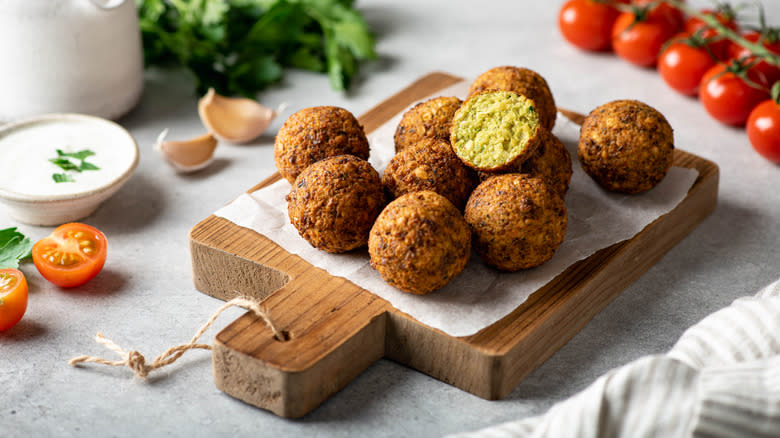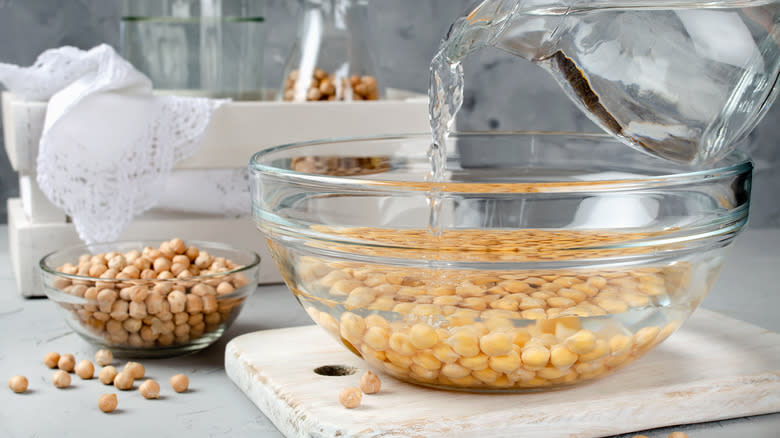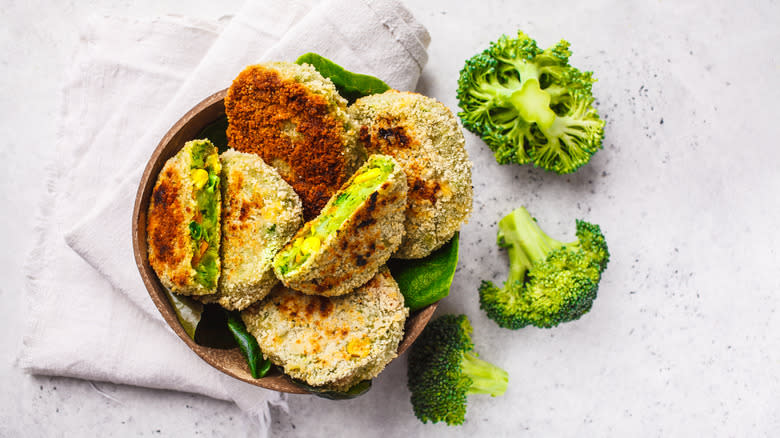The Best Falafel Starts With This Simple Step

What's not to love about falafel? Whether eaten on its own or tucked into a pita sandwich with hummus and crunchy vegetables, the Middle Eastern fried street food is savory, filling, and the perfect combination of creamy and crunchy. There's more than one way to make it, but each method starts with the same simple step: Soaked dried chickpeas.
While home cooks should always have canned chickpeas on hand for quick salads and crispy snacks, they're the last thing you want in your falafel. The time you save by opting for pre-cooked chickpeas will ultimately be for naught when your falafel turns out mushy and lacking in flavor. For the right taste and texture, it's essential to use dried chickpeas that have been soaked for up to 24 hours.
Not only are dried chickpeas free of the preservatives often found in canned chickpeas, but they also yield a creamier texture and richer flavor. Further, the starchiness of soaked raw chickpeas allows them to blend evenly with their fellow falafel ingredients in a food processor, eliminating the need for a binding ingredient like flour.
Read more: 12 Canned Foods You Should Avoid At The Grocery Store
How To Properly Soak Dried Chickpeas

If you've never worked with dried chickpeas or other kinds of dried beans before, you might be wondering if a 24-hour soak is truly necessary. Soaking chickpeas in water helps soften them to a blendable consistency, but that's just the tip of the iceberg when it comes to making falafel.
As the chickpeas swell with liquid and lose some of their tooth-cracking starchiness, they're gearing up to be cooked raw. Since no pre-cooking is involved before the falafel mix hits the frying oil, this pre-soak allows the chickpeas to be put in the food processor raw, with no boiling step required.
The day before you plan to make falafel, cover your dry chickpeas with about two inches of water in a large bowl with a sprinkle of baking soda to help them soften. Come assembly time, drain them thoroughly. One thing to keep in mind: Dry chickpeas will swell to about three times their original size after a long soak, so measure accordingly.
What Else Can I Add To My Falafel Mixture?

Using soaked raw chickpeas in falafel is a hard and fast rule, but other aspects of the dish are more forgiving. For instance, if you're wary of frying with hot oil at home, you can make baked falafel instead. The exterior might not be as crunchy as the traditional fried version, but the flavor will be as rich as ever. For less oil but lots of crispy texture, try air-fried falafel.
Beyond cooking methods, it's easy to play around with the ingredients in your falafel mixture. Along with the requisite medley of fresh herbs, garlic, and spices, consider adding additional vegetables, such as broccoli or sautéed peppers, to the food processor. Or, use sweet potato to add a subtle sweetness to your everyday falafel.
Not into chickpeas? Take cues from the Egyptian version of falafel by using fava beans instead. This version will be a bit lighter than its chickpea counterpart. Whichever version you choose, just don't forget the soak.
Read the original article on Daily Meal

